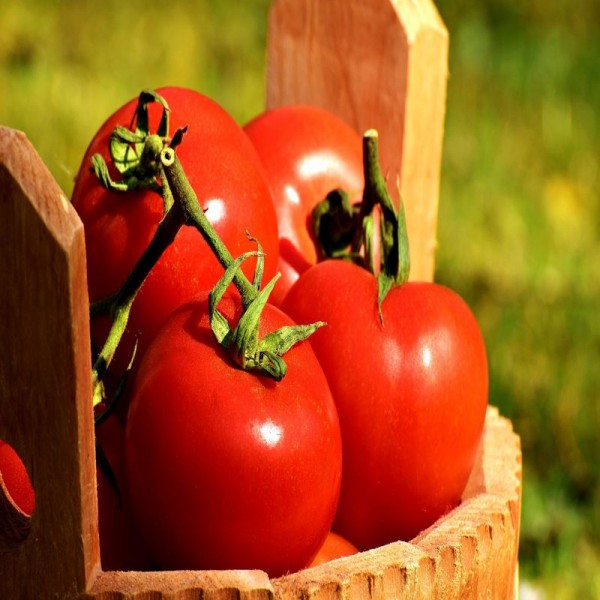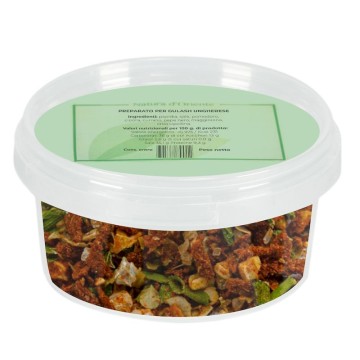The classic tomato that we use every day on the table, can be treated for preservation. The dehydrated tomato granules, in fact, come from fresh and ripe tomatoes washed, diced and dried. From quality, juicy and tasty tomatoes, this version is born which can promote digestion, maintaining different substances contained in fresh tomatoes. It can be used to make tasty snacks, soups, vegetable dressings. Tomato grains lend a powerful yet pleasant flavor to dishes, which includes sweet, spicy and slightly acidic undertones.
Tomato granules: properties and benefits
The grains or “flakes” of dried tomatoes also make abundant benefits available for the body. Dried at the right time, dried tomatoes in granules retain up to 90% of their nutritional value fresh. They make available the bio-active components such as vitamin C, potassium, lycopene, beta-carotene (vitamin A), malic acid and other substances contained in tomatoes. This type of tomato maintains the concentration of lycopene, a powerful antioxidant that can help protect the skin from the sun. Dried tomatoes also provide insoluble and healthy fiber : an aid against constipation.
The content of vitamin C , in addition, supports the immune system Tomatoes are transformed with drying and reduction into granules, to reduce their high content of moisture, which makes them vulnerable to the degradation of microbes. The methods usually used such as canning, salting, and freezing, cannot always guarantee the preservation of the essential nutrients of tomatoes. Which, on the other hand, is easier in dehydration.
The thermal processing of drying tomatoes increases their shelf life. These granulated tomatoes have a long shelf life when stored properly away from light and moisture.
Origins and History of cultivation
The tomato is a fruit that comes from a plant, originally wild in the mountains of South America - probably between Peru and Ecuador. The plants are thought to have been domesticated in pre-Columbian Mexico, and the original name comes from the Aztec word Tomatl. It appears that some of the earliest tomatoes eaten by the Aztecs were yellowish in color, not the vibrant red we know today. Already the Aztecs dried tomatoes for storage in the sun, so that they could be stored after the season was over. With the discovery of America, the tomato was introduced to Europe by the Spaniards at the beginning of the 16th century, the first to adopt it as a food together with the Italians.
The Italians called it the tomato (apple of gold), perhaps because the first tomatoes known to Europeans were yellow. In France, it was called Pomme D'Amour (apple of love) because it was thought to have aphrodisiac properties, or it was seen as a kind of eggplant, of which it is a close relative. In other countries, it was initially known as an ornamental plant, and considered dangerous as a food (botanists had included it in the poisonous Belladonna family).
Indeed, the roots and leaves of the tomato plant are poisonous and contain the neurotoxin solanine . Additionally, German folklore involved tomatoes in stories of witches, who used plants to summon werewolves. Only in the eighteenth century, many prejudices towards the tomato were dispelled. Although the tomatoes originated from the Americas, it was their popularity in Europe that helped them become a food source in the United States particularly since the 19th century.
The tomato boom in Europe came mainly thanks to Italian cuisine, through pizza (invented at the end of the 19th century) and to pasta sauces.
Today the tomato is grown in many countries of the world, every year over 170 million tons, with China as the largest producer, followed by India and the United States.
Plant and flowers
The botanical name of the tomato is Solanum Lycopersicum, a flowering plant of the Solanaceae family. It is grown for its edible fruits, which are often mistakenly considered vegetables. Tomato plants need well-drained soils to grow properly, acidic and with ample exposure to sunlight (at least 6-8 hours of direct sun each day). The height of the plants is on average 60-90 cm, they show yellow flowers in the flowering that develop green tomatoes.
In ripening, the tomatoes takea yellowish and finally red color. Some varieties remain yellow even when ripe, while others turn more orange.
Nutritional values of tomato in granules
Even in the granular version, tomatoes retain vitamin C, beta-carotene, vitamin A, lycopene, and various mineral salts (iron, potassium). They also make available the fats and carbohydrates of tomatoes, and various fibers.
How to use granulated tomatoes in the kitchen
Dried Tomato Granules are a convenient and easy way to use tomatoes in the kitchen. Just add a handful or two to your plate to give the tomato aroma and taste - a delicious addition to any recipe . Often they are used for soups, soups, stews, potato dishes, salads. They add depth of flavor to vegetable dish recipes, and can be used as a substitute for sundried tomatoes to thicken barbecue, pasta and pizza sauces . They are used in baking muffins, taralli, crackers and other baked goods.
In addition, they also create a healthy drink by dissolving them in a little warm hot water. Usually, it is recommended to use granulated tomatoes in recipes with a liquid element, in which they can be added at the beginning of the cooking process - to rehydrate. Put the desired amount of tomato beans in a small dish, cover them with enough liquid to soak them. Let them sit for at least 30 minutes - 1 hour and then wash off the excess liquid. At this point the sooner you use them, the better.
Tomato: side effects and contraindications
It is advisable to be cautious, evaluating any allergies to tomatoes, and if you suffer from stomach acid. Tomatoes are rich in minerals, so they should be taken with caution in case of kidney stones. Furthermore, before cooking them, it is advisable to bring them to boiling water. Caution is advised in doses for pregnant and lactating women.







 No reward points for this product.
No reward points for this product.
















